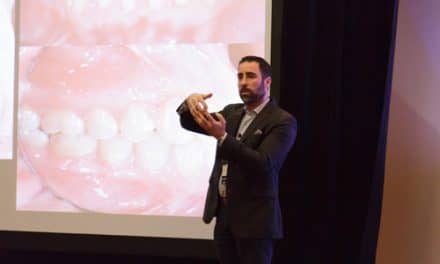Researchers created virtual patients called digital twins to train AI to better predict how teeth will move in different kinds of mouths.
A new tool being developed by the University of Copenhagen and 3Shape will help orthodontists correctly fit braces on teeth. Using artificial intelligence (AI) and virtual patients, the tool predicts how teeth will move and finds the optimal fit.
The tool has been developed with the help of scanned imagery of teeth and bone structures from human jaws, which AI then uses to predict how sets of braces should be designed to best straighten a patient’s teeth.
“Our simulation is able to let an orthodontist know where braces should and shouldn’t exert pressure to straighten teeth,” said Kenny Erleben, head of Image Analysis, Computational Modelling and Geometry at UCPH’s Department of Computer Science. “Currently, these interventions are based entirely upon the discretion of orthodontists and involve a great deal of trial and error. This can lead to many adjustments and visits to the orthodontist’s office, which our simulation can help reduce in the long run.”
Researchers created a computer model that creates accurate 3D simulations of an individual patient’s jaw, and which dentists and technicians can use to plan the best possible treatment.
To create these simulations, researchers mapped sets of human teeth using detailed CT scans of teeth and of the periodontal ligaments. This type of precise digital imitation is referred to as a digital twin – and in this context, the researchers built up a database of ‘digital dental patients’. The database also contains other digital patient types that could one day be of use elsewhere in the healthcare sector:
“Right now, we have a database of digital patients that, besides simulating aligner designs, can be used for hip implants, among other things,” said Erleben. “In the long run, this could make life easier for patients and save resources for society.”
A digital twin is a virtual model that lives in the cloud, and is designed to accurately mirror a human being, physical object, system, or real-world process. Digital twins can be used to plan, design and optimize – and can therefore be used to operate companies, robots, factories and used much more in the energy, healthcare and other sectors.
In their study, the researchers developed a simulation tool using CT scans of teeth, which can predict how a dental brace should best be designed and attached. The research is part of the EU research project Rainbow, which conducts research into computer-simulated medicine across seven European universities in collaboration with government agencies and industry.
Photo courtesy of the Department of Computer Science, University of Copenhagen










